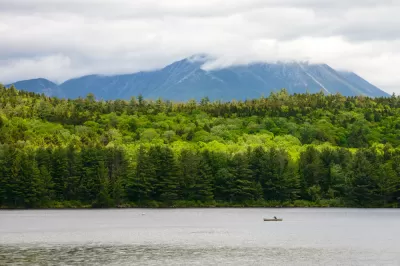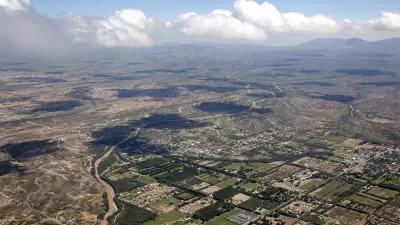What we now so far about the Interior Department's plans to shrink a "handful" of national monuments around the country.

Today, the Associated Press broke the news of a long-awaited report by Interior Secretary Ryan Zinke on the fate of 27 national monuments under review by the Trump Administration.
Secretary Zinke told the Associated Press that he will recommend boundary adjustments of some of the monuments, but did not mention any specifics.
The San Gabriel Valley Tribune followed up on the Associated Press' coverage, explaining what is known so far about the changes proposed in the report. "None of the sights would revert to new ownership, [Zinke] told the AP. He said public access for uses such as hunting, fishing or grazing would be maintained or restored."
"He did not comment on whether any portions of the 27 monuments under a White House-ordered review would be opened up to oil and gas drilling, mining, logging or other industries, something Trump has advocated," according to that article.
Jim Carlton also reported on the breaking story for The Wall Street Journal, noting that the announcement fell short of a detailed account of the report Zinke will give to President Trump. Also according to Carlton, "any reductions would likely launch a battle between environmentalists, who want the monuments preserved, and some locals."
Sammy Roth also reported on the announcement for the Desert Sun, noting that the idea of rolling back protections on national monuments is "largely unprecedented." Roth's coverage also includes background of the Obama Administration's use of the Antiquities Act to protect more 5.7 million acres of land and 550 million acres of water.
Juliet Eilperin and Darryl Fears report the big news for The Washington Post as follows:
While Zinke submitted a report to the White House Thursday and told the Associated Press he backed changing the designations for a “handful” of protected federal sites, the Interior Department did not release any specifics. Instead, it released a report summary that described each of the 27 protected areas scrutinized as “unique.”
Finally, Laura Parker also picked up the news for National Geographic, providing links to previous stories on the Interior Department's study, as well as some early indications of the political dynamics that will be at work as more details of the plan emerge.
FULL STORY: No national monuments will be eliminated, Zinke says

Alabama: Trump Terminates Settlements for Black Communities Harmed By Raw Sewage
Trump deemed the landmark civil rights agreement “illegal DEI and environmental justice policy.”

Study: Maui’s Plan to Convert Vacation Rentals to Long-Term Housing Could Cause Nearly $1 Billion Economic Loss
The plan would reduce visitor accommodation by 25% resulting in 1,900 jobs lost.

Planetizen Federal Action Tracker
A weekly monitor of how Trump’s orders and actions are impacting planners and planning in America.

Baltimore Ordered to Improve Sidewalk Accessibility
The city is one of many to face lawsuits for failing to comply with the Americans with Disabilities Act.

This Toronto Suburb Has More Bus Riders Than Columbus, Ohio
Brampton, Ontario used gradual improvements in service to prove that if you build it, they will ride.

Paris Bike Boom Leads to Steep Drop in Air Pollution
The French city’s air quality has improved dramatically in the past 20 years, coinciding with a growth in cycling.
Urban Design for Planners 1: Software Tools
This six-course series explores essential urban design concepts using open source software and equips planners with the tools they need to participate fully in the urban design process.
Planning for Universal Design
Learn the tools for implementing Universal Design in planning regulations.
Smith Gee Studio
Alamo Area Metropolitan Planning Organization
City of Santa Clarita
Institute for Housing and Urban Development Studies (IHS)
City of Grandview
Harvard GSD Executive Education
Toledo-Lucas County Plan Commissions
Salt Lake City
NYU Wagner Graduate School of Public Service





























